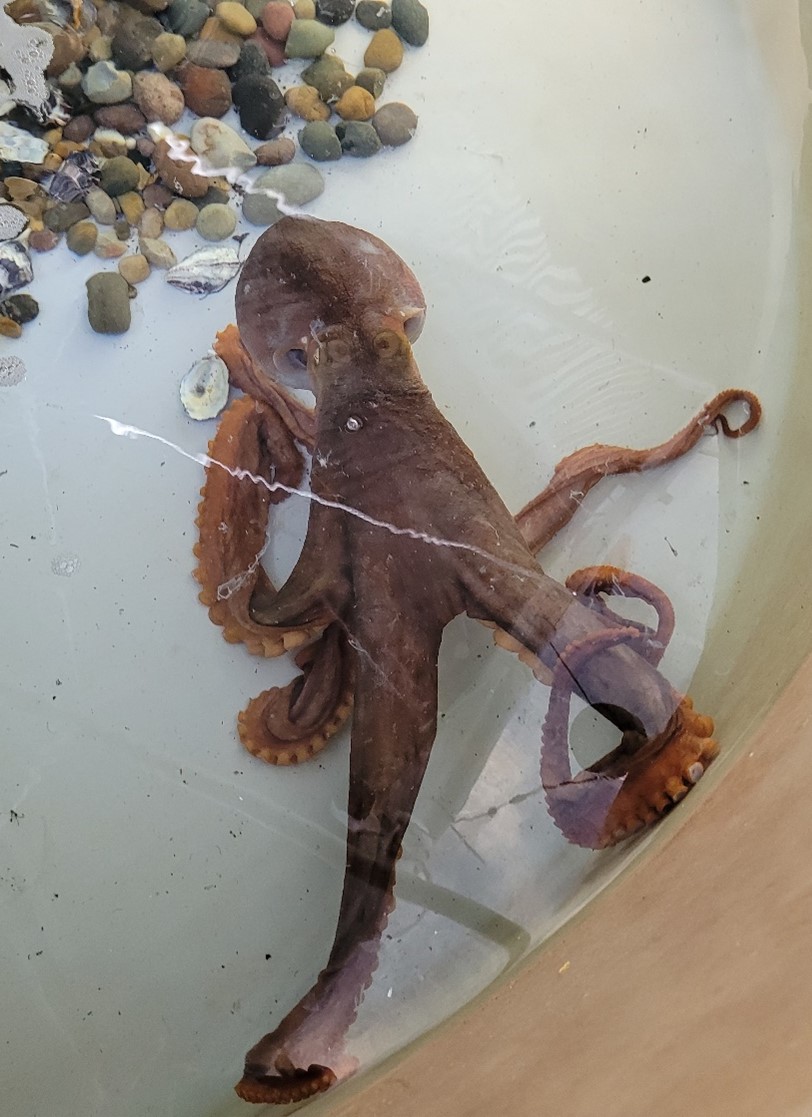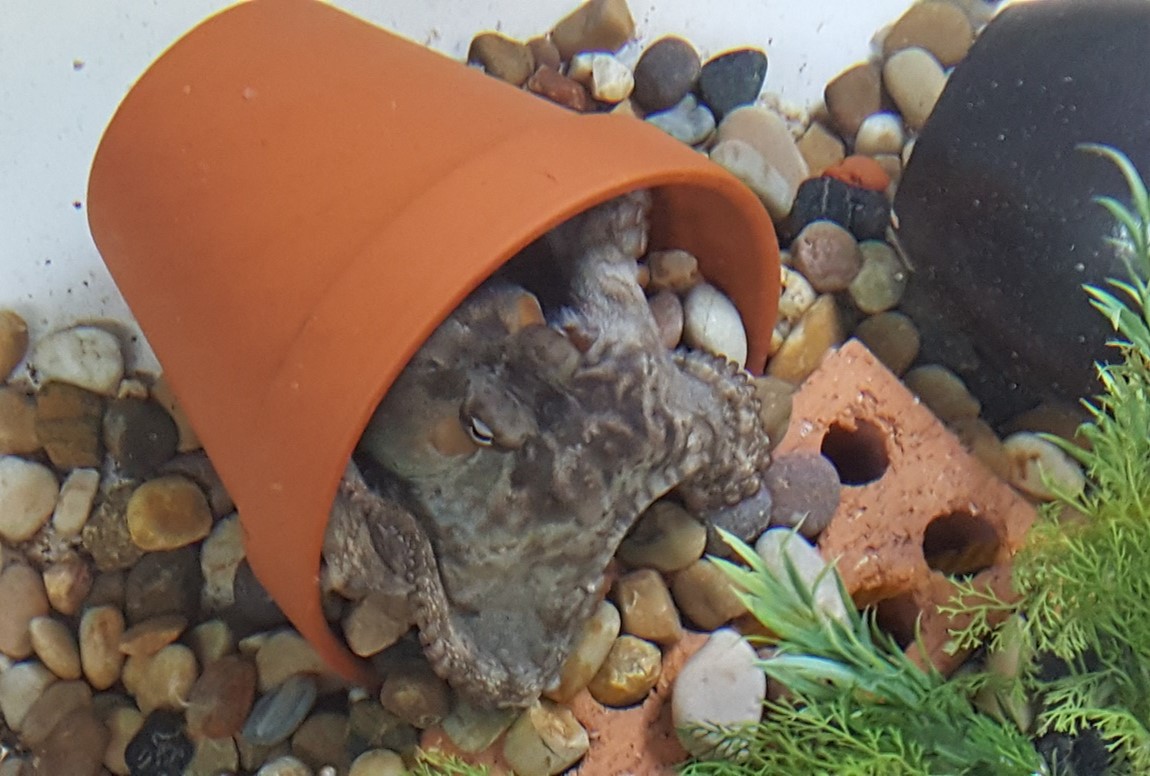The first step-by-step guide to ageing octopus has been developed as part of collaborative work by the New South Wales Department of Primary Industries (NSW DPI), FRDC, university and industry partners, to investigate the population biology of two Octopus species in NSW.
By Dempsey Ward
For decades, Octopuses have captivated the globe with their unique characteristics and elusive nature. For fisheries managers and researchers, understanding their age has been a major challenge, limiting sustainable management.
Senior Research Scientist at the NSW DPI, Karina Hall, states the solution may be just around the corner, with the release of the first step-by-step guide to ageing Octopus, an unexpected outcome of FRDC Project 2020-008.
To discover ageing methods for two targeted species, Gloomy Octopus (Octopus tetricus) and Māori Octopus (Macroctopus maorum), Karina and her project team joined forces with University of South Australia (UniSA) Australian Research Council (ARC) Future Fellow, Zoe Doubleday, early career researcher Louise Hosking, and postgraduate student Erica Durante to create the guide.

While considerable progress has been made to age Octopus, the scientific methodology can be hard to reproduce from the brief details provided in journal papers, meaning interested parties must contact researchers for more information.
“For this guide, we wanted to duplicate what Zoe had previously produced, but the methods were quite technical, so we decided to enlist their expertise to avoid reinventing the wheel.
“The project team also saw this as an opportunity to make a more definitive guide that builds on the fantastic work of previous researchers, helping others apply these methods independently,” Karina said.
The guide is an invaluable resource that equips all researchers with the tools and knowledge needed to validate octopus age, including detailed instructions on increment analyses of beaks and stylets.
Complete with illustrative diagrams and a user-friendly decision tool, the guide enables researchers to identify the most efficient and suitable method for determining Octopus age.

Zoe, who led the development of the guide, hopes it will provide a starting point for researchers new to Octopus ageing, and for those working with Octopus species that have never been aged before.
“Although it may require some refining, the guide can be used as a basis for any Octopus species in the world. We also encourage researchers to use this guide as a forum for open discussion to support the ongoing development of effective Octopus ageing methods,” Zoe says.
Future feasibility
Nonetheless, the journey continues for the FRDC project, which is now embarking on field gear trials to explore the feasibility of a developmental Octopus trap fishery in New South Wales.
Karina believes research to accompany a new developmental Octopi trap fishery is required to comply with NSW regulations. This part of the project also involves fisheries gear technologist Matt Broadhurst from NSW DPI and industry collaborator Jim Kerr of East Coast Octopus, who successfully applied for the developmental fisheries permit.
“Developmental fisheries in NSW have been a grey area for a long time,” Karina states, “they can be difficult and expensive to establish, and include the need to navigate ongoing management plans.”
Observations preceding the project led the fishers to suggest the main target species in NSW, Gloomy Octopus, behave differently to their larger counterpart in WA, prompting additional questions about existing trap methodologies.
“Catch rates were lower than anticipated and it is unknown whether this was related to unsuitable gear, stock depletion or smaller Octopi populations than in other Australian jurisdictions,” Karina says.
As field trials ensue, with a focus on diverse gear types and behavioural patterns, laboratory work will continue to help unravel the biology of Octopus across Australia and steer towards more reliable stock assessments.
The field trials will be completed later this year, whilst the lab work will finish in 2025.
Breakthrough star
Southern Cross University Honours (SCU) student, Adam Vrandich, worked with Karina and SCU Professor Brendan Kelaher to complete their first aquarium experiment, which analysed the behavioural responses of Gloomy Octopus towards different bait and trap combinations, including several novel designs. Six different trap types and four baits were presented to captive Octopus in various experimental combinations during four sequential trials.

Karina says the aquarium trial directly informed which gear types would be tested in the current field tests.
“The importance of laboratory findings for helping inform practical field tests cannot be understated, and I look forward to seeing the research results published to help inform other Octopus research,” Karina says.
FRDC-Project 2020-008 is a collaboration between NSW DPI and FRDC, with additional support from East Coast Octopus.
You can find the step-by-step guide here.
Related Project
2020-008: Population biology of Octopus species in NSW: research to support developmental Octopus trap fisheries





